Assessments are a great way to engage with your target audience. Research has shown that they can generate twice as many conversions as static content. However, this is only possible when the assessment itself is built out of awesome and thoughtful questions.
This article will cover everything you need to know to create an assessment from A to Z. From choosing the best topic to crafting the perfect assessment questions, learn how to use an assessment to return value to both your company as well as the respondent.
1. Setting up the assessment
Let’s take the example of a maturity assessment. A maturity assessment is a resource that helps indicate whether or not a certain solution or strategy is right for the respondent, based on the answers provided within the assessment. Moreover, a maturity assessment provides awesome content for lead generation assessments. Here are some nice examples of maturity assessments for lead generation, by our customers:
1. Pantheon

Pantheon created a maturity assessment to test their respondents’ Web Team Agility. Right after taking the assessment, the respondent will receive a customized roadmap to upgrade his or her Web Team Agility.
2. EcSell Institute
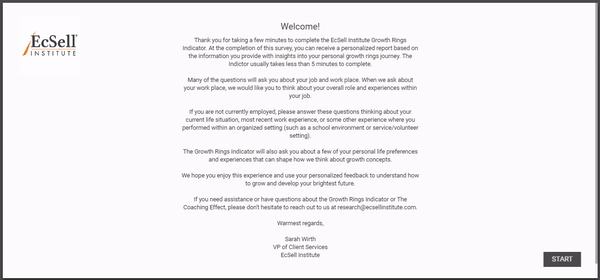
EcSell Institute’s TEDx Talk “Why Comfort Will Ruin Your Life” went viral, which made them realize that their concept really resonated with people and hit on elements and experiences that have a profound impact on individuals.
Even though their great video had a lot of views,unfortunately that didn’t give them any leads or customers … until they built The Growth Rings assessment.
2. Write an appealing assessment introduction
Writing an appealing assessment introduction is going to play to your advantage. It’s your one chance to stir the curiosity of your audience and make them want to help you out with their answers. We’ve collected a few tips to create an irresistible assessment introduction along with some great templates to get you started.
Tip number one – and probably the most important one – is to sort out all the necessary information you want to provide. Be aware that every assessment introduction is different based on the questions you want to ask and to whom. Keep it short but powerful!
For lead generation assessments, the intro most often starts with a question in relation to what they will learn. Don’t be afraid to take it a step further by beginning with a short introduction like the example below. Your assessment introduction will scream reliability!

Template: Want to know how good your [competences] are? Take our [topic or subject] assessment.
As the proverb goes, time is money. And your respondent’s time is valuable as well. The most common question asked when people take a survey is: “How long will it take?” It’s up to you to be honest about the duration but also to make sure your assessment is limited to the essential questions.
You can’t say that the assessment will only take 2 minutes with 15 open-ended questions ready to be answered. The respondent will abandon the assessment without a doubt.
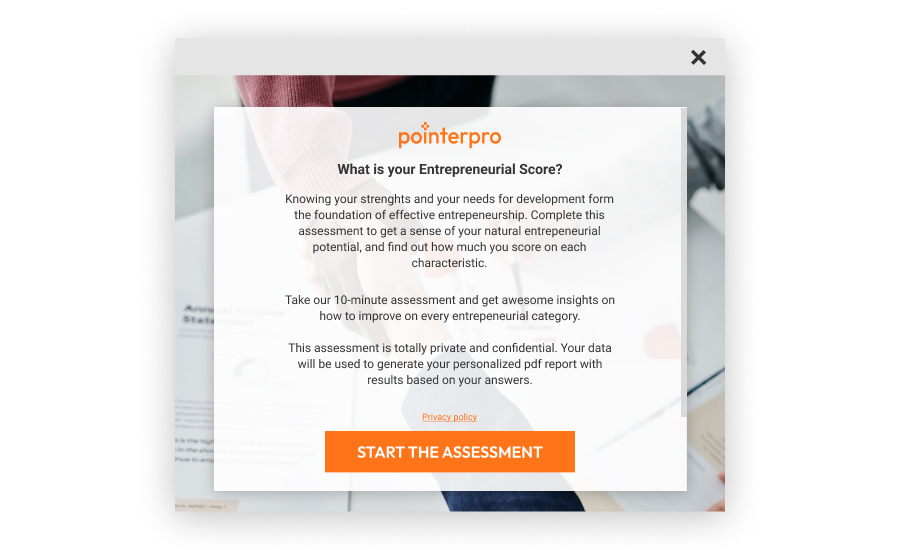
Template: Your time is valuable to us, and that’s why we made sure the assessment will only take [amount of time].
People nowadays are so worried about the exposure of their personal information. So it’s very important to be up-front and have a clear privacy disclaimer. A clear privacy disclaimer will make people more likely to answer honestly. You’ll get a positive response rate with your assessment by showing you’ve taken the respondent’s privacy into account.
Include in your disclaimer information such as:
- The personal data you’re collecting;
- The use of the data and whether it’ll be disclosed to anyone else;
- The link to your privacy policy.

Template: We want to thank you for letting us know who you are. Don’t worry, all the answers collected from the [topic] assessment are completely private and confidential. The data will be used for [use of data + what happens with it].
[link to privacy policy]
Finally, you can’t go wrong with a simple thank you. It’s the least you can do, and it shows a sign of appreciation. Try to create a very human and “spontaneous” experience by personally thanking your respondents.

Template: At last, thank you! We’re grateful for the precious time you invested in our assessment.
3. Create compelling assessment questions
When crafting your assessment questions, keep in mind that they have to be relevant for your respondents. Before writing down any assessment questions, construct a little plan for yourself with these elements:
- What’s the objective of my assessment?
- How do I speak my respondents’ language?
- Which questions are most suitable to deliver me the data that I want?
- What kind of statistics will come out of this assessment?
3.1 Types of questions with appealing assessment questions
To create a successful lead generation assessment, you have to keep in mind that you want your respondents to learn more about themselves and your business. Perhaps they don’t know anything about your product or service, hence why you have to ask the right assessment questions. Asking the right questions helps respondents understand their problems more clearly.
There are many types of questions and that could be overwhelming at first. But don’t get discouraged, because we’ve made the perfect list with the most used types of questions in assessments followed by example questions from the lead generation assessment: The Entrepreneurial Score.
After all, the content of the assessment questions depends on the subject of your assessment. But let this mainly serve as an inspiration.
#1 Interval questions
Interval Scale Questions consist of values that have a meaningful mathematical difference but don’t have a true zero point. One example is Celsius and Fahrenheit. Zero degrees marks the height of the temperature and doesn’t represent the absence of the temperature.
When looking for precise answers and useful data, it’s best to use interval scale questions.
-The Slider Scale-
The slider scale displays the values in a horizontal format. The respondent slides from left to right to set their final answer. Keep in mind: when using a slider, the meaning of each value should be easy to interpret.
Example questions:
- After a failure, I am able to pick myself up and start over.
- I am capable of seeing many solutions to a problem.
- I really enjoy situations where there are rules to respect.
- I have a tendency to put off difficult tasks until later.
- I am always in the midst of launching a new project.
#2 Ordinal questions
Ordinal Scale Questions are made of answers that the respondent can rank from least to most satisfied. For example, you can ask customers if they’re satisfied, not satisfied or dissatisfied with the customer service. Keep in mind: when using a ranking system, you should clearly instruct what the order of the ranking is.
-Ranking the Answers-
This type of question lets the respondent rank the answers in order of importance. You’ll get a clear overview of which items have the most demand and which ones don’t.
Example questions:
Rank the following entrepreneurial traits in order of importance: one being most important and five being least important.
- Openness to experience
- Conscientiousness
- Extraversion
- Agreeableness
- Neurocritism
Rank the following advantages of entrepreneurship in order of relatability: one being most relatable and five being least relatable .
- Increased self-esteem
- Set own work schedule
- Financial rewards
- Personal satisfaction
- Make own decisions
Rank the following types of entrepreneurship in order of preference: one being most preferred and five being least preferred.
- Novice entrepreneur
- Habitual entrepreneur
- Nascent entrepreneur
- Serial entrepreneur
- Portfolio entrepreneur
Nominal Questions are used for the purpose of classification. These questions are defined as a scale for labeling variables into classifications and don’t involve a quantitative value or order. Examples of this include gender or place of residence.
-Multiple Choice with Text-
With multiple choice questions, respondents can only choose one answer from the list of choices. Keep in mind: when using multiple choice, know that the answer of the respondent might not be listed. It’s recommended to think broadly about the answers and make sure the respondent can relate to them.
Examples of Questions:
How do you react when faced with difficulties?
- Focus on the future
- Think about the solution
- Look for the good
- Seek the lesson
How do you think of yourself?
- As an artist
- As a specialist
- As a mentor
- As a curator
What’s your biggest strength?
- Your creativity talent
- Your expertise
- Your communication skills
- Your curiosity
-Multiple choice with Satisfied or Not Satisfied-
Example questions:
How satisfied are you with the current state of your enterprise?
- Very dissatisfied
- Not satisfied
- Neutral
- Satisfied
- Very satisfied
How satisfied are you with your business-oriented mindset?
- Very dissatisfied
- Not satisfied
- Neutral
- Satisfied
- Very satisfied
How satisfied are you with your marketing strategy?
- Very dissatisfied
- Not satisfied
- Neutral
- Satisfied
- Very satisfied
We hope you’ve gained some inspiration in how to craft your assessment questions. Maybe you’ve still got writer’s block, but don’t worry, we’ve got you covered. Here’s an article about the best online sources for quiz and/or assessment questions.
Indulge yourself with a ton of possible assessment questions, from which you can choose from, that suit your lead generation assessment the best.
3.2 An awesome goodbye to your respondents
Hooray, your respondent got through the assessment! Now it’s time for the ultimate turning point- the moment you generate your respondents into leads. You want your potential customer to leave his or her personal details. Those who are interested in finding out more about themselves will have no issues giving you their email address and/or their names.
To achieve this, you’ll need to implement a very effective method, which is a simple thank you followed up with a download button to their personalized report. With this report, you will elaborate further on their results in more detail. When reviewing their results, make sure to give tips and tricks and advice based on their scores.
For example, the personalized report of the Entrepreneur Score assessment shares a lot of tips and advice that eventually lead to a higher entrepreneurial potential. Your respondents or potential customers will appreciate this since it offers them great and valuable information that will definitely help them during their careers.
4. Important tips and pitfalls
To build a qualitative lead generation assessment, remember to:
#1 Include a call-to-action
Your call to action is the chance to motivate your respondents to take real steps toward becoming a real customer. For example, in your personalized report, you can refer to someone t from the company with whom the respondent can speak to. Every CTA is different depending on your objective.
#2 Give feedback during the assessment
Another way to create a more engaging assessment, is to give feedback during the questionnaire itself – especially when having various parts where your respondents can score on. It’s great for them to see how they scored on each segment compared to the benchmark , for example.
#3 Use an image choice if possible
Images can be a fun and engaging way to get answers from your respondents. A lot of assessments can use a visual touch. For example, an image choice question could be: “Which color screams extroversion?”
#4 Avoid using leading questions
A leading question forces the respondent to answer in a particular way. Often implying or encouraging a certain answer by manipulating the respondent. An example of a leading question could be: “Don’t you agree that persistence is a critical leadership trait?”
You can’t collect objective data with such a question. If you’re looking for an honest answer, avoid guiding the respondent to the kind of response that you wish to obtain. A good example of an objective question would be: “What kind of leadership trait is critical to you?”
#5 Avoid using double-barreled questions
A double-barreled question is composed of more than two separate issues or topics but can only have one answer. An example of a double-barreled question could be: “How did you like our product and customer service?” Split the question in two, and ask instead:
“What’s your opinion about our product?”
“How satisfied are you with our customer service?”
#6 Keep it simple
An assessment shouldn’t be difficult at all, so avoid using complicated words. Your respondents may end up giving unclear answers or not cooperating at all with overly complicated questions. Simplicity is the key to brilliance! Go for short and clear. And make it easy for your respondents bearing in mind that they might be busy. At last, a lengthy survey may increase the possibility of a high abandonment rate.
Wrapping up
Which content qualifies to be turned into a lead generating assessment? This is without a doubt a maturity assessment. These assessments are awesome for engaging with your target audience and teaching them something new about themselves.
By crafting the right assessment questions, you can immensely decrease the abandonment rate of your assessment. Don’t forget to take the tips above into account when crafting the assessment questions. You ultimately want to return value to both your company as well as the respondent


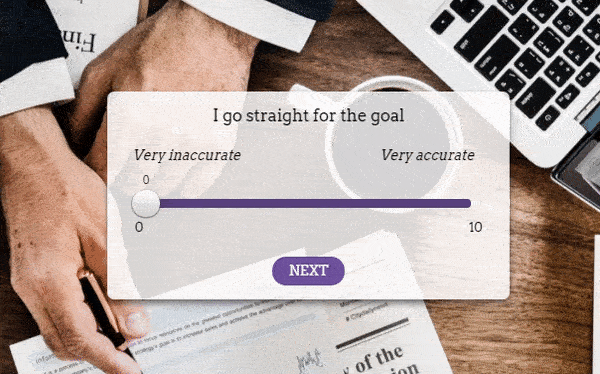
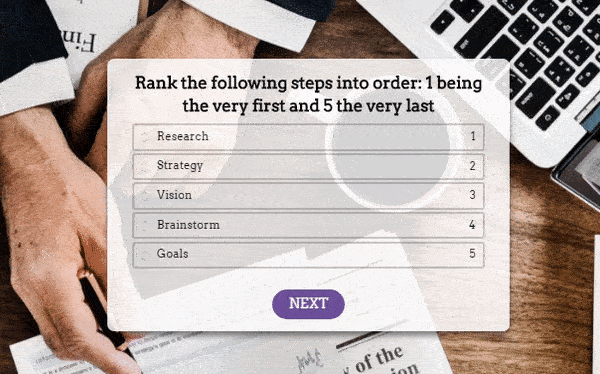
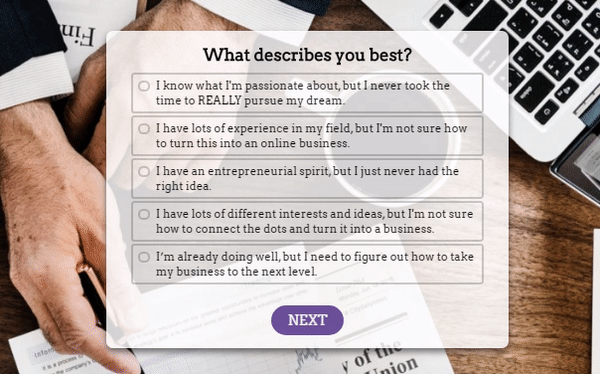
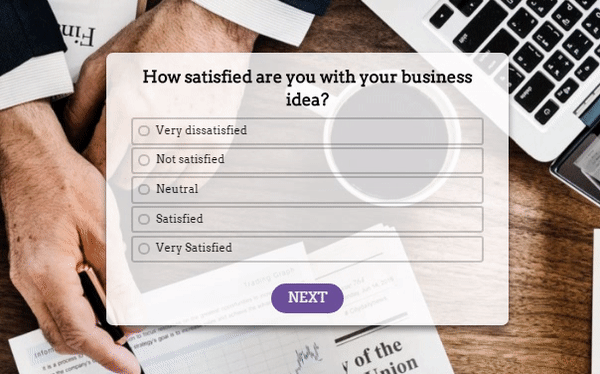
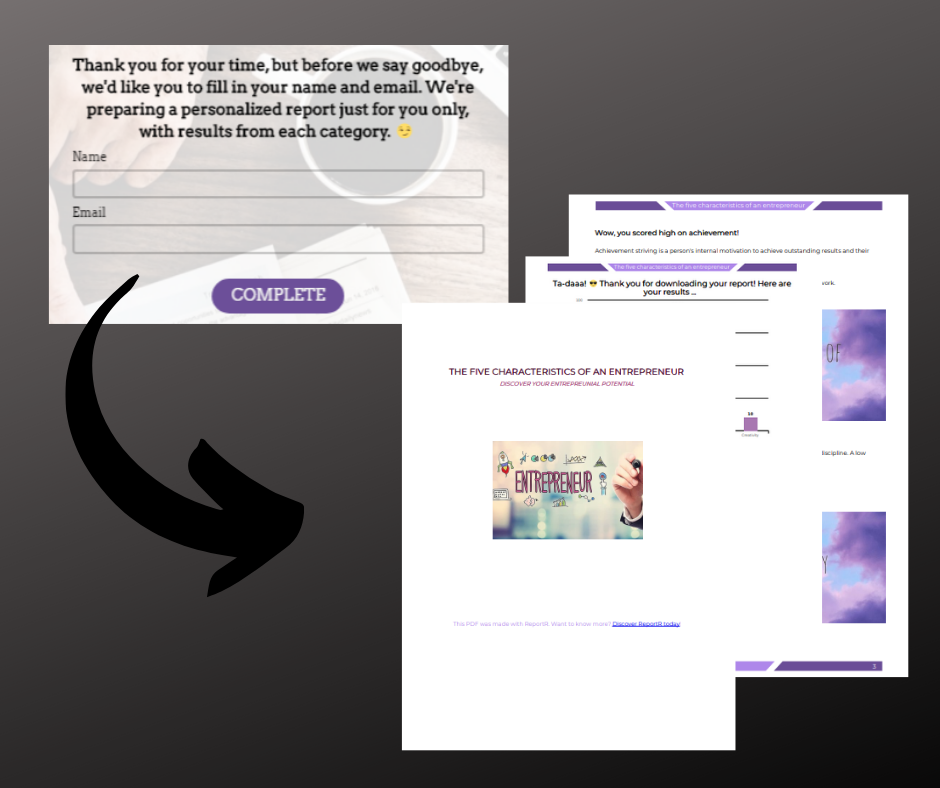
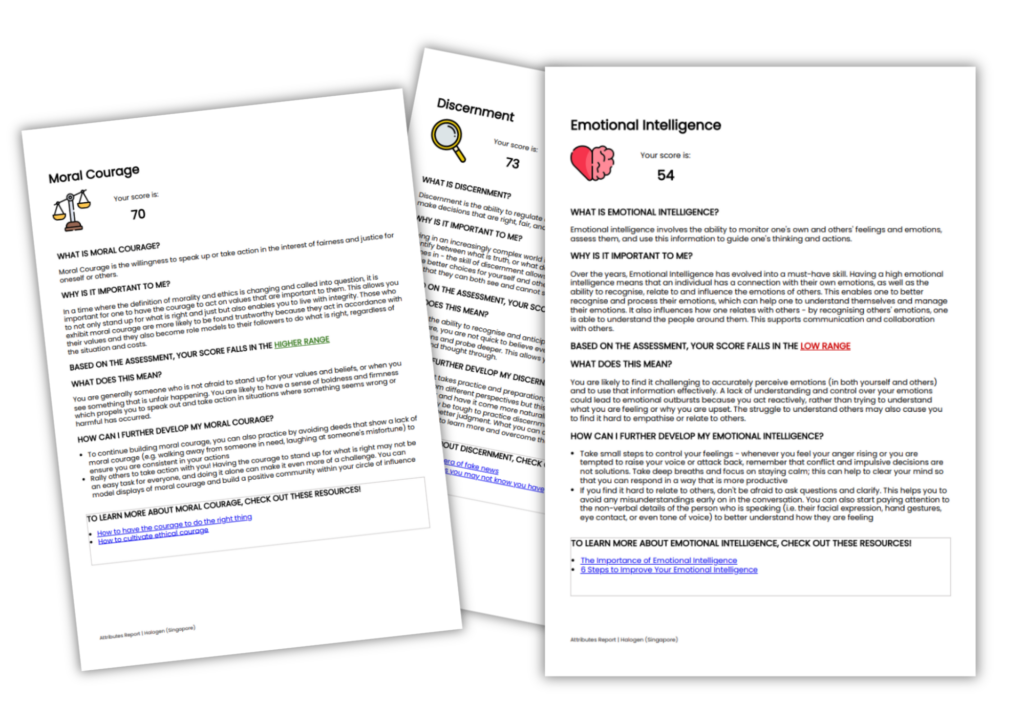




2 Responses
Woah, great content! This article has helped me a lot. Keep up the good work!
Yeah its good and very needy one .Thanks to you